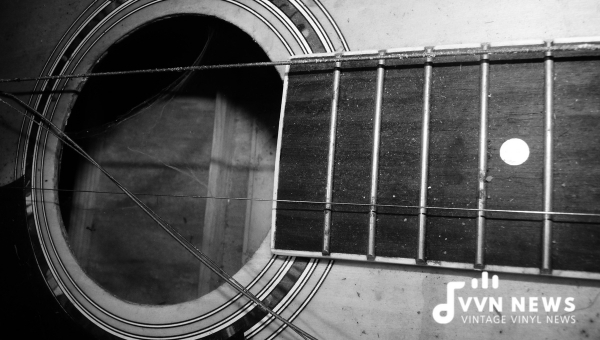When I first picked up a guitar, one question lingered in my mind. How do I know which guitar strings are right for me?
It’s a common query that haunts every beginner, and even some seasoned players, at different stages of their musical journey.
This prompted me to create this definitive guitar strings guide to demystify the complex world of guitar strings.
Finding your perfect set of strings is akin to finding the perfect voice for your melodies; the two resonate together, creating a splendid musical harmony.
The correct location not only enhances your musical expression but can also redefine your playing experience.
Let me escort you through this guitar strings guide through that intricate process, simplifying it with practical tidbits and valuable tips.
Remember, this isn’t about finding the ‘best’ string but more about discovering what works best for you because when it comes to guitars and their accessories – one size truly doesn’t fit all!
What are Guitar Strings?
Guitar strings are the stretched cords strung across the guitar that produce musical sounds or notes when plucked or strummed. There are typically six strings on a standard guitar, which are made of varying thicknesses.
The thickest string produces the lowest note, while the thinnest string produces the highest.
The material of guitar strings can be nylon for classical guitars, steel for acoustic guitars, and nickel or stainless steel for electric guitars.
Different materials and thicknesses create unique tones, helping musicians customize their sound.
How Strings Affect Your Tone?

The strings on your guitar profoundly impact the sound or tone your guitar produces. It’s not always about its material; its length, mass, and tension play pivotal roles in defining your guitar’s tone. The unique characteristics of various types of guitars further modify these effects. Allow me to unfold the mystery with some string knowledge of each kind.
Four-string basses
The four-string bass usually features thicker and longer strings than regular guitars.
Because they vibrate at lower frequencies, they generate deeper tones. You can choose between a round wound for a bright, punchy tone or a flat wound for a mellow, smoother sound.
The gauge – or the thickness – can influence this further. Thicker gauges offer more sustain but require more finger strength.
Six-string guitars
Six-string guitars are the most common type of guitar that we see today. They come in different forms – acoustic, electric, classical, etc.
Each variant uses other string materials, significantly impacting their respective tones.
For instance, lighter gauge steel strings on a six-string acoustic guitar will have a bright and crisp tone.
In contrast, heavier ones offer a warmer and mellow sound with greater resonance and sustain but increased playing difficulty.
Regarding six-string electric guitars, nickel-wound strings are generally favored for their warm fundamental tone, whereas stainless steel allows brighter and sharper sound.
Twelve-string guitars
Twelve-string guitars add an extra dimension to the musical palette as they essentially pair similar note strings together- one with standard thickness, the other being thinner; played together in “courses.”
This produces a naturally chorus-like effect and resonance, creating a lush, full-bodied sound experience unique to twelve stringers!
String material does play an important role here as well. Here’s a helpful comparison:
- 80/20 bronze: These are typically bright sounding.
- Phosphor Bronze: These have slightly less treble but last longer.
Seven- and Eight-string Guitars
Seven- and eight-string guitars add one or two extra bass strings to expand the lower range besides providing extended chord voicings and soloing options.
String quality becomes even more crucial here due to these added possibilities!
With a more significant number of strings comes the responsibility to balance flexibility with tone stability:
While a lighter gauge might ease complex shredding solos, a thicker one will better support low-end stability – producing more defined ‘djent’ like heavy sounds popular within progressive metal scenes.
So when you’re choosing guitar strings, remember: the number of guitar strings plays an astounding role in shaping your instrument’s overall voice.
Also Read: 24 Best Metal Guitars Guide To Amps, Strings, & Pickups
Guitar String Gauges
When discussing guitar strings, one of the first things to consider is the string gauge.
String gauge refers to the thickness or diameter of the string, measured in thousandths of an inch.
A more significant number means a thicker string and a heavier gauge. The gauge of a guitar string can significantly affect playability and tone.
Extra Light
Extra light strings are typically around .010-.047″. They are considered one of the easiest to play – less tension requires less effort for fretting and bending notes.
These strings generally produce a bright but thin tone compared to their heavier counterparts.
Light
Light sets usually range from .011-.052″. They strike a balance between ease of play and richness of tone. They offer more volume and sustain than extra-light strings without much added difficulty on your fingers.
Medium
Medium gauge strings often range from .012-.056″. They are perfect for those who want more volume and fullness to their acoustic sound. Though harder on your fingers, you’ll get more projection and arguably richer tone with medium-gauge strings.
Heavy
Heavy gauge strings boast diameters that go beyond 0.013″. They might be tough on hands, especially for beginners, but yield rich, full-bodied sound great for achieving maximum resonance and sustain—particularly in genres like metal or heavy rock.
Remember that the ideal choice varies among players. Some find lighter gauges useful, while others favor heavier ones based on the style or genre of music they play.
Guitar String Metals

The choice of guitar string metals significantly impacts the timbre and feel of your sound. Different metals produce a range of tones, from warm to bright, and have variable durability, playability, and tension.
Electric Guitar Strings Metals
Electric guitar strings are predominantly made from metals due to their electrical conductivity. Here, we explore three top choices.
Stainless Steel
Stainless steel delivers a bright, rich tone with pronounced sustain. They offer corrosion resistance and longer-lasting freshness. However, they are slightly harder on the fingers and frets.
Nickel Plated Steel
These are probably the most popular electric guitar strings – a combination of a steel core covered in nickel plating. A balanced tone – not too warm or bright- makes them suitable for virtually all types of music genres.
Nickel
Pure nickel strings give off a warm vintage tone typical for blues and classic rock genres. They’re easier on the fingers than stainless steel but may wear out faster under extensive use.
Acoustic Guitar Strings Metals
Acoustic guitars rely purely on string vibration, making strings’ material crucial to achieve specific tonality.
80/20 Bronze
Composed of 80% copper and 20% zinc, these strings, also known as ‘brass,’ provide crisp, bright tones with an extra zing (perfect for open chords!) but tend to lose brightness quickly over time.
Phosphor Bronze
Added phosphor in this alloy extends the life span by slowing the oxidation process. Hence, they retain their deep, warm tones longer than bronze strings, ensuring lasting resonance ideal for folk & country music.
Silk
Silk and steel, or “compound strings,” are designed for fingerpicking and folk-style playing. They have a softer touch and require less finger pressure, making them more comfortable to play.
Also Read: 20 Best Classical Guitars [Top Picks For A Beautiful Sound]
Classical Guitar Strings Metals
Classical guitars typically utilize nylon strings for their warm, mellow tone perfectly suited to classical music and flamenco.
Nylon
Nylon strings are usually clear or rectified nylon. Clear nylon is known for its purity of tone, while rectified nylons undergo a grinding process to make them precise in diameter with a slightly warmer tone.
Gut
Gut strings are generally the choice of period instrument enthusiasts and provide a rich, warm, complex sound. They’re historically accurate for baroque guitars but are relatively high-maintenance, needing frequent changing/tuning.
Silver Plated
The silver-plated copper wound on nylon is a staple among classical guitarists.
It’s praised for its “traditional” classical sound- rich cordial basses with clear trebles, making them ideal for concert use.
Remember that experimenting with different materials helps discern what clicks best with your musical style, genre, strumming habits, and even the tonal quality of your guitar.
Ultimately, it’s all about the synergy between you, your guitar & your chosen set of strings!
I hope this guitar string metals guide was informative enough to help you get started on finding which string metal truly hits the right chord!
Guitar Strings Coatings
Guitar strings coatings are a relatively modern innovation designed to increase the lifespan of guitar strings and reduce the need for frequent changes.
Uncoated Strings
Uncoated, or “non-treated” strings, offer a traditional feel and bright, crisp tone. But they’re prone to dirt, sweat, skin oils, and environmental elements that can degrade their performance over time.
Coated Strings
Coated or “treated” strings feature a thin layer of protective material applied to the strings’ surface.
This extra layer of protection helps prevent corrosion from sweat and oils on your fingers while playing.
They typically have a longer lifespan than uncoated strings but may produce slightly muted sounds compared to uncoated ones.
Popular manufacturers like Elixir, D’Addario, and Ernie Ball all produce high-quality coated string choices that musicians worldwide use.
Types of Coatings
While there are different types of coatings depending on brand and preference, most standard varieties are either:
- Polymer coatings: These are applied over the winding wire and offer solid protection against wear and tear.
- Metallic coatings: Usually made with materials like silver or nickel, these help protect against rust.
Striking the proper balance requires understanding these aspects, which this guide will continually help you navigate towards!
Winding Method

The winding method pertains to how the outer wire is wrapped around the core of the guitar string.
This significantly impacts the feel, tone, and playability of your instrument. Let’s dive into the three most common winding methods: Roundwound, Flatwound, and Halfround.
Roundwound
Roundwound strings are where it all started. They have gained unrivaled popularity, and the reasons are pretty simple – optimal tonal projection and a comfortable grip.
Crafted by winding a round wire around a round core, these strings are known for their bright tone and strong sustain.
However, they carry one significant pitfall – the bumpy surface can cause finger noise as you move up and down along this string type.
But if you’re looking for some raw sound that gets better with aggressive playing styles, roundwounds won’t disappoint you.
Flatwound
Flatwound strings feature flat “ribbon-like” wire wrapped tightly around a round or hexagonal core.
This creates a smooth string surface that drastically reduces fret noise and offers an incredibly comfortable playing experience.
Flat-wounds churn out a comparatively mellow tone with less sustain than their round-wounded counterparts.
The downside is they can be pretty expensive due to their complex manufacturing process. Flat-wounds can be your best buddy if jazz or blues tickles your musical senses.
Half-round
Halfrounds bridge the gap between round-wounds and flat-wounds by offering an amalgamation of both worlds’ features.
Also known as a ground wound or pressure wound, half rounds undergo a process after being round where they’re ground down to produce a semi-flat surface.
They give off milder tones when compared to round-wounds but brighter than flat-wounds while minimizing finger noise.
Also Read: 24 Best Chorus Pedals In 2025 [Deliver A Rich & Wide Guitar Sound]
Best Guitar String Brands
Regarding the world of guitar accessories, especially strings, some notable names are known for their enduring legacy, quality, and signature tones.
Martin
C.F Martin & Company, known as Martin, has produced premium-grade strings for nearly two centuries.
Synonymous with superior tone and playability, Martin strings have been the go-to for many famous musicians like Johnny Cash and Paul McCartney.
They’re best known for their Martin SP line, created with a high tensile-strength core wire and a quality wrap wire that assures crisp, long-lasting sound.
Fender
The legendary American brand Fender excels at creating world-class guitars and reliable guitar strings.
Fender produces guitar strings both for electric and acoustic types. When it comes to electric, their Pure Nickel Roundwound series is quite favored by blues or jazz artists due to its warm vintage tone.
On the other hand, their acoustic lines, such as the Phosphor Bronze series, deliver bright ringing tones with excellent clarity.
GHS
GHS is another reputed player in the field of string manufacturing whose products boast an eclectic mix of tones suitable for diverse genres of music.
Their unique Boomers series, made from durable stainless steel or nickel-plated steel wrapped tightly around a round core wire, generates powerful, long-lasting sound ideal for all playing styles.
Elixir
Known for their innovative Polyweb, Nanoweb, and Optiweb coatings that reduce finger squeak, minimize corrosion, and enhance playability, Elixir Strings have captured the market swiftly since its inception in 1997.
Catering to acoustic, electric, and bass guitars, these coated strings produce vibrant details with an extended tone life.
Ernie Ball
Originators of iconic Slinky electric guitar strings, Ernie Ball, has been leading in guitar string innovation since 1962.
Known well among rock musicians like Eric Clapton and Slash, Ernie Ball’s Slinky lineup in nickel-wound or pure nickel provides balanced, rich harmonics while delivering ample attack when played hard.
D’Addario
An innovative company driven by a passion for performance, D’Addario offers wide-ranging choices to suit every guitarist’s needs.
From Phosphor Bronze (especially favored by acoustic players) to ProSteels (an excellent choice for those seeking an aggressive bite), D’Addario keeps pushing musical boundaries through its commitment to innovation blended perfectly with tradition.
DR
Rounding off our list is DR Handmade Strings, cherished globally by professional artists owing to their experimentation with coating processes combined with the age-old method of hand-winding, which makes DR stand out in skilled craftsmanship.
Explicitly known for less-string breakage issues and offering acceptable tonal variations, DR is a laudable name among the guitarist’s worldwide community.
Understanding your playing style, desired tone, and a bit of trial & error can quickly help you decide your favorable brand from this robust listing above.
How To Choose Guitar Strings

Choosing the right guitar strings is fundamental as they can drastically improve or alter your playing experience and tone quality.
The prime factors that should influence your decision are:
String Material
The type of music you want to play determines the kind of guitar you use and, subsequently, the type of strings. Different string materials will give different tones and feel. Here’s a quick overview:
- Nylon: If you’re a classical or flamenco guitarist, nylon strings deliver a warm, mellow tone authentic to this genre.
- Steel: For country or rock n’ roll genres, Steel strings on acoustic guitars offer a crisp and bright sound.
- Nickel or Stainless Steel: These are commonly used for electric guitars as they interact well with magnetic pickups.
String Gauge
Your strings’ thickness (gauge) impacts both their sound output and playability. This is always reported as a part of specific numbered sets like “9s,” “10s,” or “11s”. Remember:
- Lighter gauges Offer ease while fretting, bending, and vibrato, but they break more easily.
- Heavier gauges: They are harder on the fingers but provide increased sustain and fuller tone.
Of course, there’s always room for custom gauges catering to varying needs!
Winding technique
Winding refers to how the metal wires are wrapped around the core string.
- Roundwound: Most common winding which gives a bright tone
- Flatwound: Gives a smooth feel with less finger noise
- Half-round: An intermediate option aiming to combine the benefits of both (bright tone yet softer feel)
Coated Strings
Coated strings have considerably revolutionized the lifespan and tonal longevity of guitar strings.
It assists in reducing build-up from sweat and grime, extending string life by 3-4 times longer than uncoated ones.
Available in ultra-thin coatings like Elixir’s Nanoweb or thicker ones like Elixir’s Polyweb, one has options based on how much natural string feel you want to be preserved.
FAQs About Guitar Strings Guide
Which are the best strings for an acoustic guitar?
While the ‘best’ is subjective and depends on your musical preferences, Phosphor Bronze and 80/20 Bronze are popular due to their bright, clear sound.
How often should I change my guitar strings?
Typically, every 3 months or 100 hours of play, but this can vary depending upon your usage, playing style, and even sweat acidity.
What’s the difference between coated and uncoated guitar strings?
Coated strings have a protective layer that increases string life and reduces finger squeak, while uncoated strings offer a more traditional feel and tone but may not last as long.
Is there a difference in sound between different guitar string brands?
Different brands use various materials, winding methods, and gauging, which can affect the tone.
Are thicker or thinner guitar strings better?
Thicker strings (‘heavy’) typically produce fuller, louder sounds, while thinner (‘light’) offer more effortless playability but may have less volume and sustain.
Conclusion
The world of guitar strings is both diverse and complex. They play an essential role in shaping your overall sound, so finding ones that resonate with your musical preferences is critical.
From gauges, metals, and coatings to winding methods and brands, each choice contributes uniquely to your guitar’s tone and playing comfort. The best string is subjective – it’s all about what feels suitable for you!
Explore different types, and experiment with your sound until you hit the perfect note. It’s all part of the beautiful journey called music!








